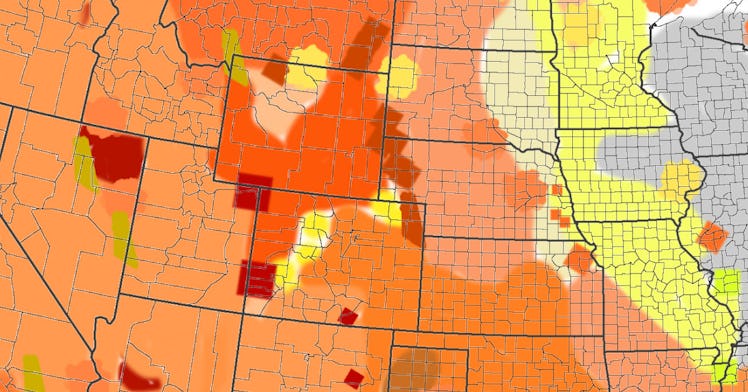This Map Shows Your Wildfire Risk is Worse Than You Think
"Costs associated with wildfire have grown from $1 billion per year between 1990-1999 to $13.6 billion by 2020."

The threat of the effects of climate change is already revealing itself. Record-high summer temperatures; deep freezes in states like Texas that break the power grid, flooded homes from summer storms, and record-breaking hurricanes yearly. Though we still have time to avoid the worst effects of climate change, there’s no denying that we live on a different planet than the one we grew up in. One map released by First Street foundation last year found, for example, that the flood risk to our homes is probably more extensive than we thought. A new map from the same foundation found that wildfires, wildfires, which are increasing in numbers, are the same. Our risk of finding ourselves in the middle of one of these disasters is worse than you may realize. This map highlights what your wildfires risk is based on where you live, and if you think you’re protected, you might be mistaken.
Our wildfire risk is higher than we think
As Axios reports, new research from the non-profit First Street Foundation highlights how climate change will impact our lives over the next 30 years, including the steep increase in wildfire risks. Along with the research, First Street Foundation released a new “Fire Factor” risk map.
The map shows the wildfire risk over the next 30 years (which is the time period of the average mortgage) based on where in the country you live. The map “seeks to capture the changing risk profile of individual properties as warming continues, both in terms of exposure to a wildfire and shifts in wildfire intensity.”
The report finds millions of properties are at risk of wildfire. More specifically, 80 million properties in the United States have some level of wildfire risk over the next 30 years. And when those numbers are broken down further, into minor, moderate, major, and extreme risks, the research gets more real.
The risks were broken into minor, moderate, major, and extreme for wildfires
- A total of 49.4 million properties have a “minor” risk of wildfire damage of the next 30 years.
- About 20.2 million properties have a “moderate” wildfire risk over the next 30 years.
- Approximately 6 million properties face a “major” risk of wildfire in the next three decades.
- And 1.5 million properties face an “extreme” risk of wildfire over the next 30 years.
Some states will see more risk than others over the next three decades. For example, the data from First Street Foundation shows that:
- Oklahoma, Arizona, Florida, Texas, and California have the most amount of properties at risk for wildfire damage.
- Montana, Mississippi, Alabama, and Colorado will see the largest increase in properties with minor risk.
- The biggest increases in properties with a major wildfire risk by 2052 include Utah, New Mexico, Arizona, and Wyoming.
To come to these results, the model developed by First Street Foundation simulated fire behavior millions of times. This allowed them to capture a “probabilistic view” of how wildfire may increase and spread under different landscape conditions.
It also took into consideration how hot wildfire flames will be when they reach a property (so how quickly damages could occur), and also considered how those metrics may change over time.
What will this increase mean for you and your home?
“A little more than one out of two single-family homes across the country has at least some wildfire risks,” Sara Brinton, lead product manager for realtor.com, told Axios. “We think it’s important for every American to have access to this type of information.”
That’s a lot of people — more thna half of Americans. And 30 years isn’t that much time, really. To help homeowners understand their potential wildfire risk when purchasing a new home, the “Fire Factor” risk score will be integrated across commercial property and residential real estate services.
“Wildfire is one of the most dangerous perils associated with a changing climate, spreading from forested areas to more populous urban and suburban areas,” First Street Foundation tweeted. “Costs associated with wildfire have grown from $1 billion per year between 1990-1999 to $13.6 billion by 2020,” and that number is probably going to get higher as more states find themselves at risk.
To read the full report, and see the entire map, check out First Street Foundation.